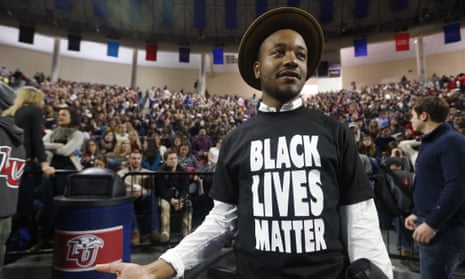Much ado has been made about how America appears to be stuck in a new era of politics marked by a shockingly ugly racial climate. It’s generally thought to have begun in the Obama years, reflected by the Tea Party surge into Congress in 2010 and represented now by Donald Trump’s wild popularity.
Racism, the story goes, has gone from something kept in the dark margins of society and generally frowned upon to something regularly shouted from rooftops with pride. But racial disparities have existed in healthcare, education, poverty rates and on almost every other structural level for as long as this country has existed. Since when is saying something racist more of a problem than maintaining racist structures? Is a climate only “shockingly ugly” if it puts words to shockingly ugly realities that are already here?
A recent CNN article explores the newly “erupted” white frustration with nonwhite ethnic groups, particularly black and immigrant communities, through a series of interviews. Regarding Barack Obama, for instance, the article states: “Many Trump supporters say he can’t be trusted, he cares more about the welfare of black people than whites and he’s inflamed racial divisions in the country. Others say they’re convinced that he’s Muslim.”
It’s not hard to read between the lines to see how this frustration is based not in response to how Obama threatens to privilege black people or Muslims, but on the idea that the supremacy of this almost entirely white group of supporters is being challenged. It is not a lack of racial divisions they want, just a lack of divisions that do not benefit them. And that sentiment was already present.
Yes, it’s true that more attention has been drawn to blatant displays of racism, but attention is necessarily skewed by whatever is popular in the moment.
According to the Bureau of Justice Statistics, hate crimes stayed fairly stagnant from 2004 to 2012, and the number of hate groups have actually fallen in recent years, according to the Southern Poverty Law Center. Though relatively higher now, black unemployment rates have almost always been twice that of white rates.
All this stayed constant through this “new era”, which also saw interracial relationships and their supporters continually increase and a black president reelected with substantial white support. The question, then, is not whether there has been an exacerbation of racial tensions, but rather: why are so many only paying attention now, and are they really paying attention to the things that matter?
Neither Trump nor his supporters’ nasty rhetoric exemplify the most obvious way racism is currently expressed in America. This era’s dominant form of racism is still best epitomized in the disregard – or (feigned) surprise – that it remains. It is in only 16% of white Americans agreeing with the statement that a lot of racism still exists. It is in 63% of white football fans believing that a black player is not a victim of racism when called a thug for celebrating similarly to how his white peers do without being defamed.
It is in how, right now, we frame the conversation about racism in American politics as represented by Trump as “shocking”, “new” or somehow vastly different than any previous iteration, when it is merely a different color lipstick for the same ugly pig.
The truth is white America’s silence around racism is no longer working. Organizations like Black Lives Matter and the Movement for Black Lives refuse to let it, shining light on all of the issues it would prefer to ignore. In its place, a resistance to that challenge to pay attention gains traction. It is reminiscent of the blatantly racist political response to Reconstruction after the civil war, but it is only more of the same.
Nonwhite communities have felt and challenged racism throughout, while many well-meaning white peoples’ only concern has been to cover it as much as possible, because the only other alternative would be the much more difficult task of destroying it.
Trump and his supporters disturb well-meaning white people not because they are racist, but because they do not bother to hide it. Otherwise, Trump’s white opponents would be just as disturbed with how racism has wreaked havoc on this country as with its ascendance into undisguised political rhetoric.
